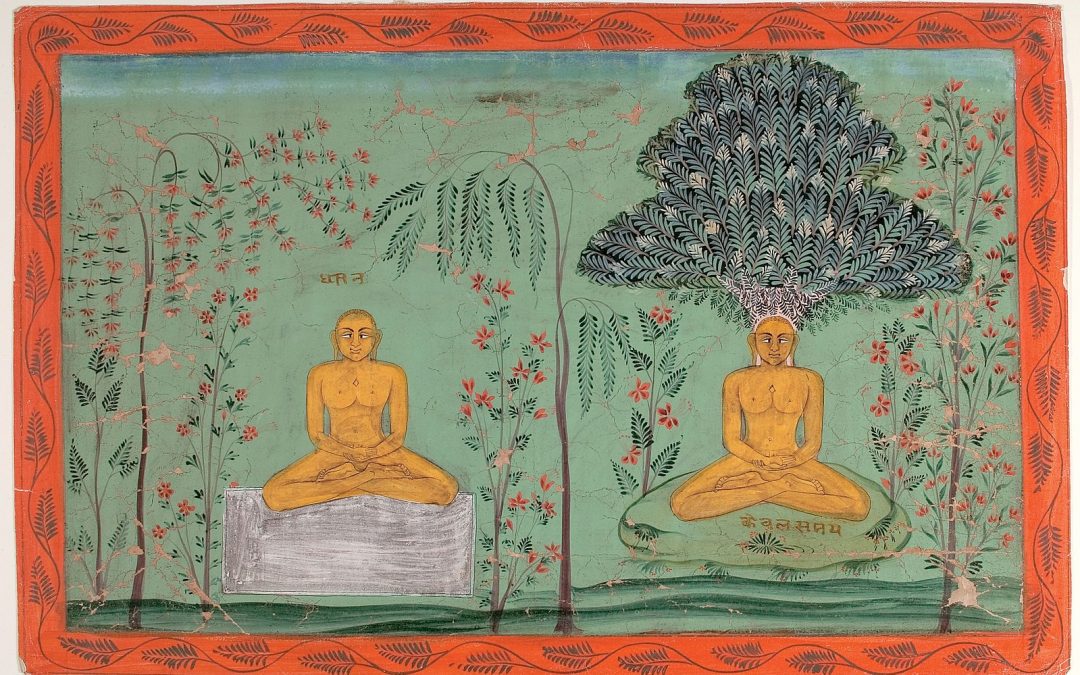
If you’ve taken a yoga teacher training course or dove into a serious study of Yoga, chances are that you have come across the Yoga Sutras.
The Yoga Sutras are paramount in the world of classical yoga philosophy. Many sages, philosophers, scholars, and practitioners have translated and commented on these texts over the centuries.
What are the Yoga Sutras?
The Yoga Sutras consist of short Sanskrit statements (either 195 or 196, varying by sources) that outline the theory and practice of yoga. These statements, called Sutras, are akin to individual threads that weave together to form a tapestry of wisdom, distinct from Vedic texts.
Yoga, translated, means union. Hence, the Yoga Sutras are essentially a compilation of wisdom about achieving this union. But union with what? Delving deeper, the Yoga Sutras originate from the Samkhya school of Indian philosophy which distinguishes between two primary realities: purusha and prakriti. However, before diving deeper, it’s essential to know a bit about the text’s history.
The Origin of the Yoga Sutras
These revered scriptures are ascribed to a sage named Patanjali, believed to have lived between the 2nd and 4th CE in India. Beyond the Yoga Sutras, Patanjali contributed various treatises, yet remains most renowned for this particular work.
The Yoga Sutras are organized into four chapters, or padas:
- Samadhi Pada: This chapter defines yoga and elaborates on the journey to samadhi, a state of divine absorption.
- Sadhana Pada: Here, two primary paths of yoga practice are discussed: kriya yoga and ashtanga yoga.
- Vibhuti Pada: This section describes the potential powers, or siddhis, attained through yoga and the importance of not becoming attached to them.
- Kaivalya Pada: The final chapter delves into the concept of liberation and the interplay of purusha (universal consciousness) and prakriti (material nature).
The Yoga Sutras offer an extensive guide for spiritual practice. But who was the mind behind this profound text?
Who Was Patanjali?
Patanjali remains an enigmatic figure. Historically, not much is known about him, though legends offer some insights. One such myth suggests that Lord Vishnu sent Adishesha, the serpent King, to Earth as Patanjali to disseminate the wisdom of yoga.
Interestingly, in Tamil Nadu, the Brahmapuriswarar Temple in Tirupattur hosts a meditation hall sacred to Patanjali. It’s believed this was where he achieved Jiva Samadhi.
Patanjali’s Explanation of The Eight Limbs of Yoga
The most recognized section of Patanjali’s Yoga Sutras is the Samadhi Pada, detailing Ashtanga Yoga or the eight limbs of yoga. These eight limbs serve as observances and disciplined practices guiding spiritual journeys:
- Yamas: Universal vows or observances, including non-violence (Ahimsa), truthfulness (Satya), non-stealing (Asteya), proper energy use (Brahmacharya), and non-possessiveness (Aparigraha).
- Niyamas: Disciplines facilitating inner purity, such as purification (Shaucha), contentment (Samtosha), disciplined spiritual practice (Tapas), self-study (Svadhyaya), and devotion (Ishvara Pranidhana).
- Asana: Physical postures, initially meant for meditation, but now encompasses the wide range of yogic postures.
- Pranayama: Expansion of life force, primarily through breath control.
- Pratyahara: Drawing senses inwards, nourishing the internal realm.
- Dharana: Concentration, bringing attention to a singular point.
- Dhyana: Meditation, evolving when concentration solidifies.
- Samadhi: Experiencing union or total absorption.
Understanding Samadhi through Samkhya
To truly grasp samadhi, familiarity with Samkhya philosophy, the backbone of Patanjali’s Yoga Sutras, is crucial. Samkhya, one of India’s oldest philosophical schools, outlines the universe as a dance between purusa (cosmic Self) and prakrti (nature in all forms).
What is Samadhi?
Samadhi, the pinnacle of Patanjali’s eight limbs of yoga, is the state of complete union with the divine. Drawing from Samkhya, this union occurs when the yogi realizes the separation between the witnessing purusha and prakrti, leading to liberation. Patanjali encapsulates this as: “yogas citta vritti nirodha” – Yoga is the cessation of mind fluctuations.
Different levels of samadhi exist, transcending linguistic description. What remains certain is the profound unity experienced in samadhi, where duality dissipates, reflecting reality’s true nature.
Further Guidance
Regular practice can expedite progress on the yogic path. Like any spiritual scripture, guidance from seasoned practitioners can be invaluable. If the Yoga Sutras intrigue you, further assistance is readily available upon request.

WRITE US TO BOOK YOUR FIRST DISCOVERY CALL

